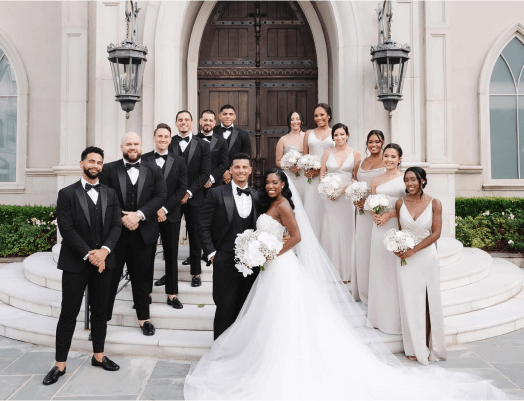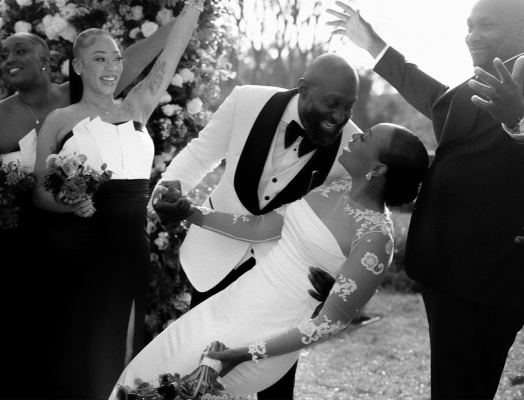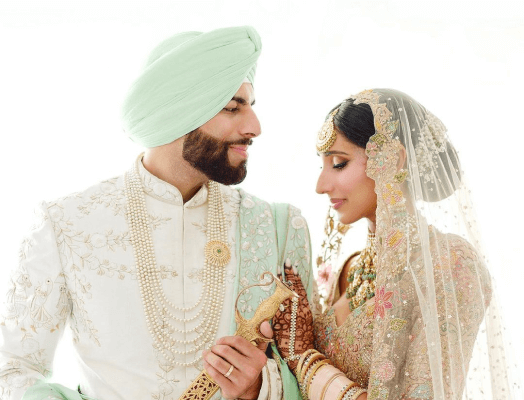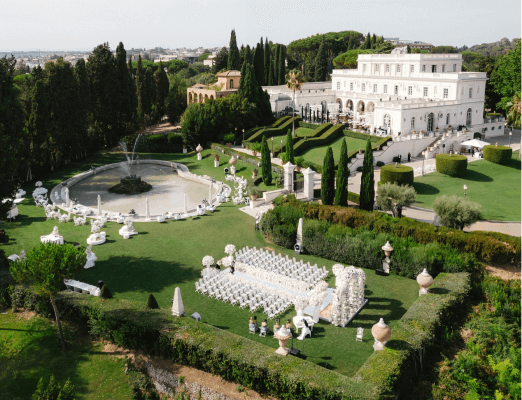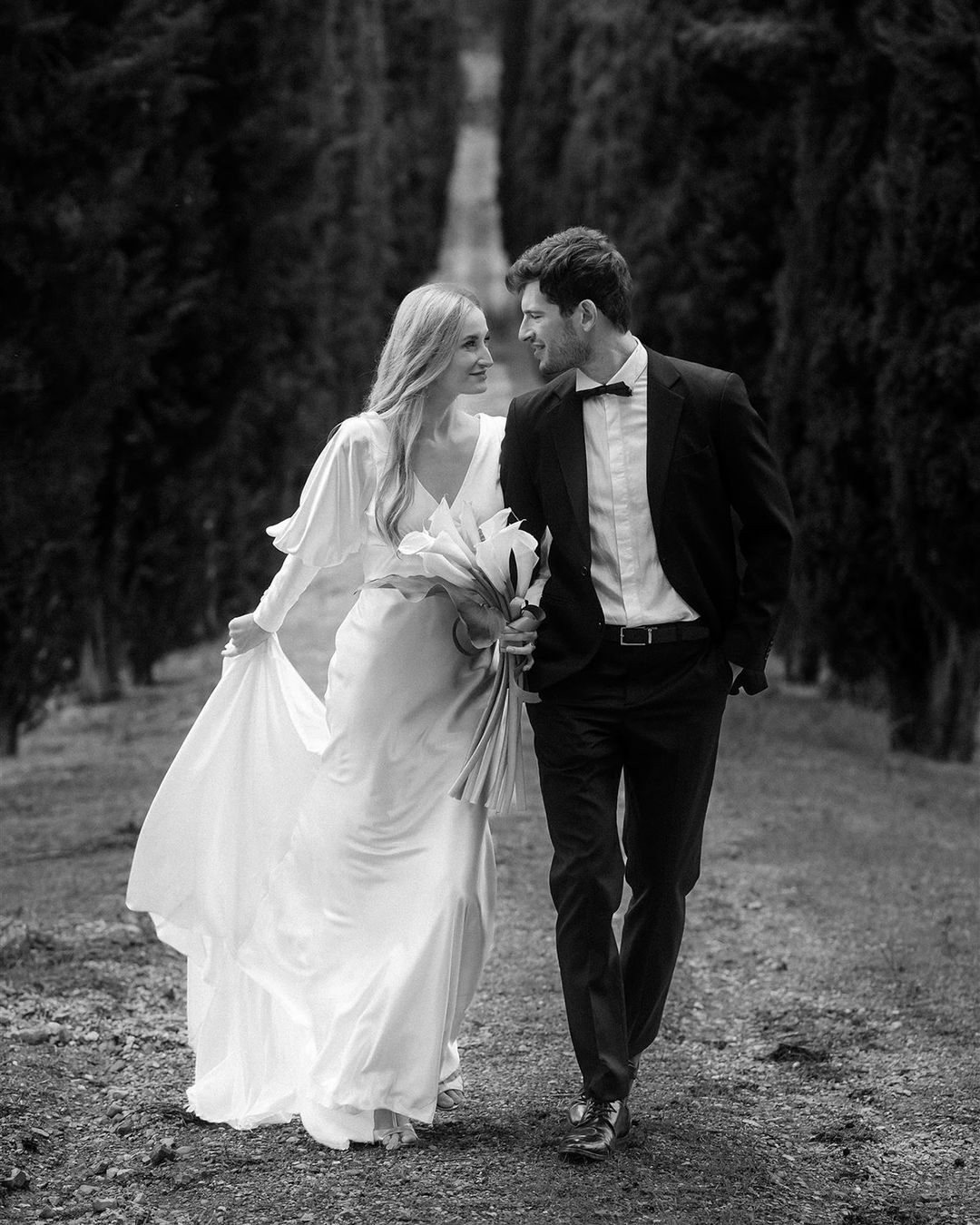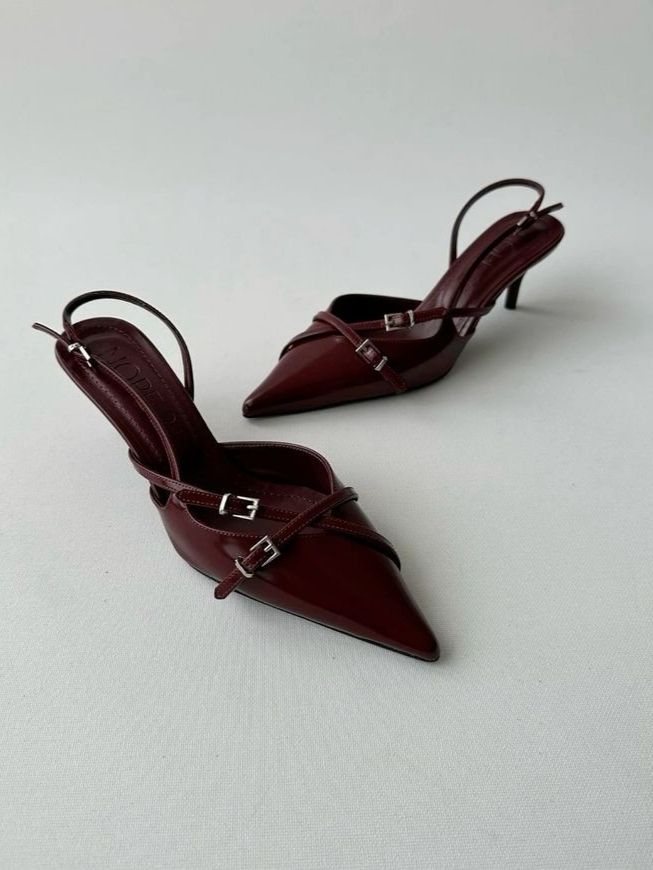Unveiling the Timeless Tradition of Handfasting Ceremony
- Author: Natali Grace Levine
- Reading time: 8 min 27 sec
- Publication date: 09/11/2024
- Updated: 08/15/2025
Welcome to the enchanting world of handfasting, a tradition as timeless as love itself! This ancient custom, steeped in history and romance, is making a stunning resurgence in modern weddings. Whether you're dreaming of a ceremony that nods to your heritage or simply looking for a meaningful way to personalize your special day, handfasting offers a beautiful, symbolic gesture of unity. But what is a handfasting ceremony? In this article, we'll explore the roots of this captivating tradition, its evolution through the ages, and how you can incorporate it into your wedding. So, let’s unravel the mystery and charm of handfasting together!
Find Your Perfect Wedding Vendors
Origins of Handfasting Ceremony: Ancient Roots and Cultural Significance
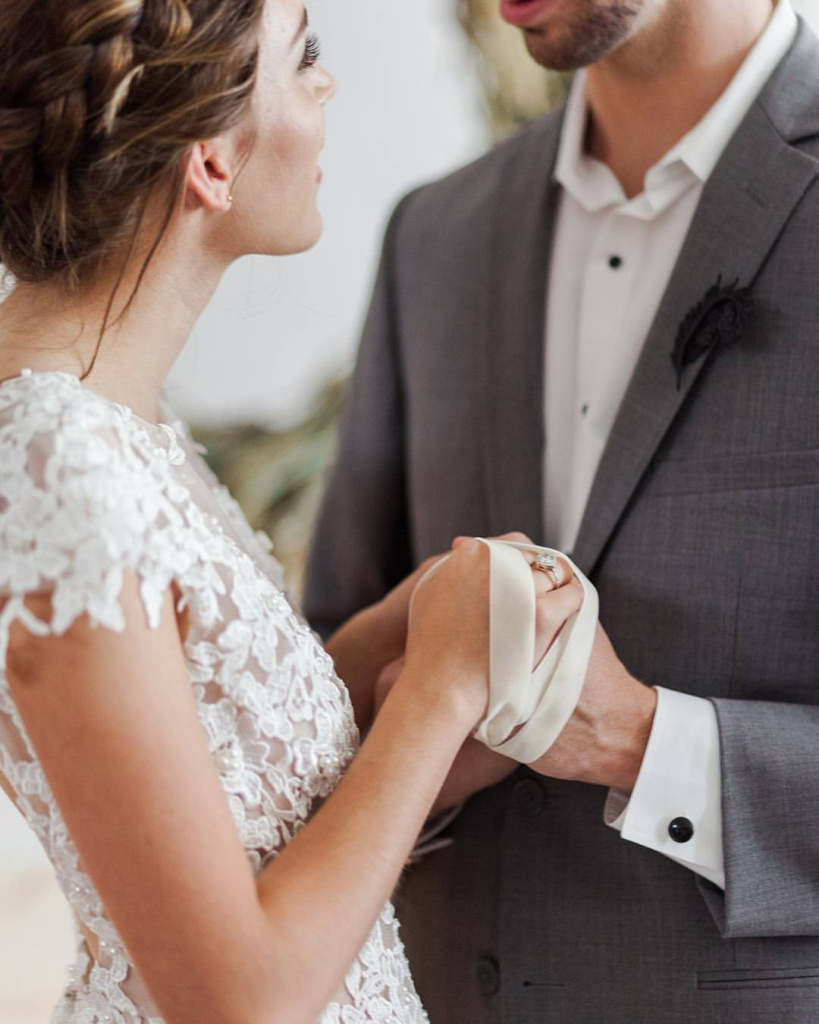
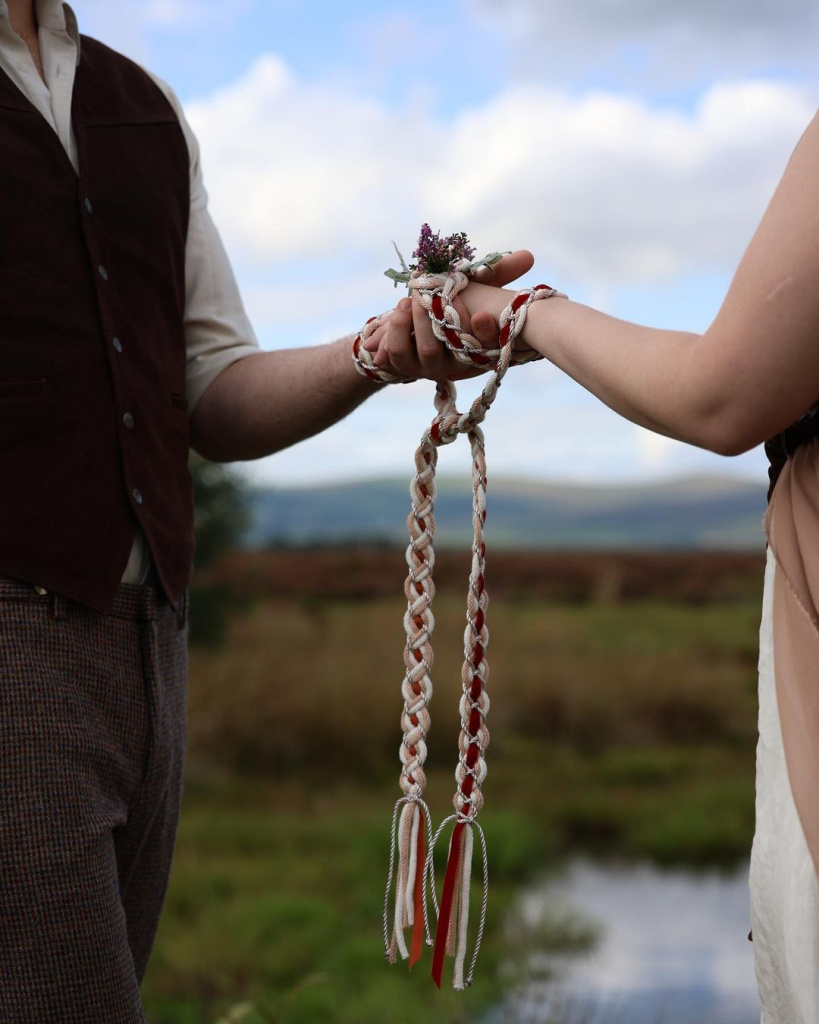
The tradition of handfasting has its roots deeply embedded in ancient Celtic culture, primarily found in Scotland and Ireland. Historians trace this practice back to the early medieval period when it was commonly used as a form of betrothal as well as marriage. Unlike the momentary exchange of rings we see today, handfasting involved a more physical representation of union—an actual tying together of the couple’s hands, which is believed to be the origin of the popular phrase "tying the knot."
In these ancient ceremonies, the couple's hands were bound together with a cord, ribbon, or even a strip of tartan from the clan of the groom, symbolizing their intent to marry. This binding was not only a significant part of the engagement process but often constituted a legally binding agreement between the two families involved, emphasizing its importance in community and legal settings.
Celtic priests, known as Druids, typically performed these ceremonies during significant times such as Beltane or Samhain, which were festivals marking the beginning of summer and winter, respectively. These events were chosen for their deep spiritual significance, enhancing the sacredness of the union.
The significance of the ceremony varied across different regions. For instance, in some areas, handfasting was a temporary agreement lasting a year and a day after which the couple could decide to part ways or enter permanently into marriage. In other regions, it was as binding as any marriage ceremony, underscoring the regional variations in practice and belief.
The Evolution of Hand Tying Ceremony Through the Ages
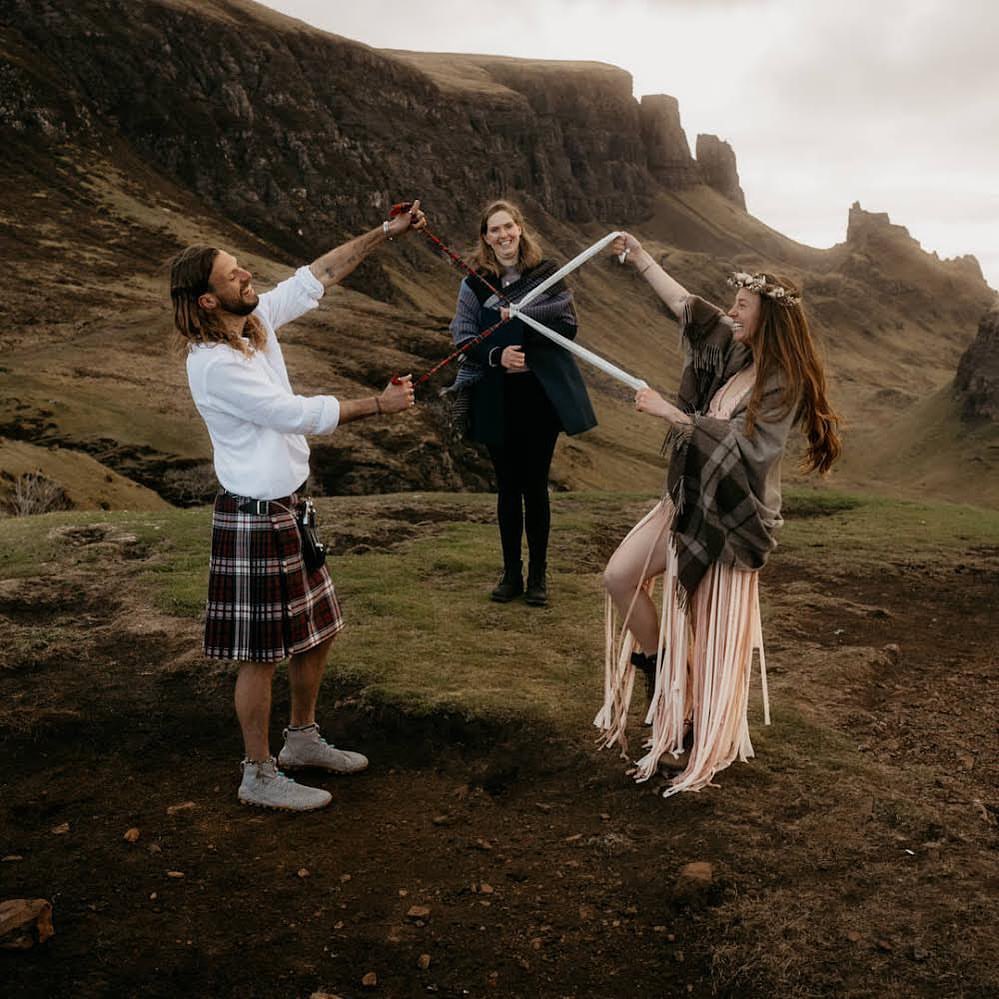
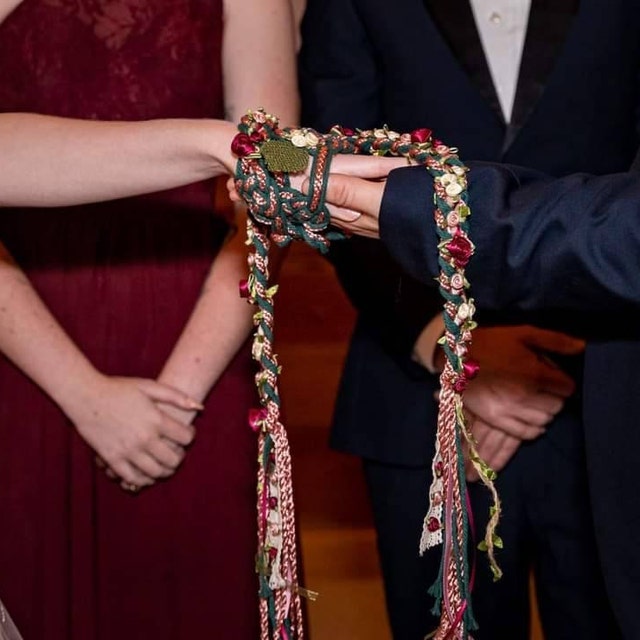
The handfasting ceremony, originating in ancient Celtic tradition, has traversed centuries and undergone significant transformations to align with changing cultural norms and legal frameworks. Initially, this ritual was a straightforward, yet profoundly symbolic act involving the physical binding of a couple's hands to signify their engagement or marriage.
Medieval and Renaissance Adaptations
During the medieval period, handfasting evolved to serve dual purposes depending on the region. In some areas, it became a formalized engagement ceremony, where the handfasting would last for a set period, typically "a year and a day." This trial period allowed couples to ascertain their compatibility before entering into a permanent marriage. This practice provided a practical solution to the slower communications and travel times of the era, allowing families and communities to plan and prepare for the eventual full wedding ceremony.
In other regions, particularly within Norse and Germanic cultures, handfasting ceremonies became immediately binding, much like the modern conception of wedding vows. In these cases, the handfasting ritual was often part of a larger, community-attended ceremony that included feasts and festivities, emphasizing the social and communal recognition of the union.
Post-Reformation Changes
With the spread of Christianity, particularly after the Reformation, the handfasting ceremony began to wane in popularity in many parts of Europe. The Church sought to standardize marriage practices and emphasized the sacramental nature of the marriage vows spoken within a church setting. This shift led to a decline in handfasting ceremonies, which were viewed as pagan or non-traditional. However, in some remote areas of Scotland and Ireland, the practice persisted as an acceptable form of marriage in the eyes of local communities until the 18th century.
19th Century to Modern Day
By the 19th century, handfasting had largely fallen out of practice, remembered more in folklore than in actual use. However, the late 20th century saw a resurgence of interest in traditional and neo-pagan practices, leading to a revival of handfasting. This revival was part of a broader movement that embraced ancient customs as meaningful and personalized alternatives to conventional religious ceremonies.
Today, handfasting has been adapted by couples around the world who seek to incorporate traditional symbolism into their weddings. It's popular not only among those who follow Celtic or pagan beliefs but also among couples who appreciate the rich symbolism and history of the practice. Handfasting has become a way to honor heritage and to add depth to modern ceremonies, reflecting the couple's unique relationship and commitment to each other.
Traditional Elements of a Handfasting Ceremony
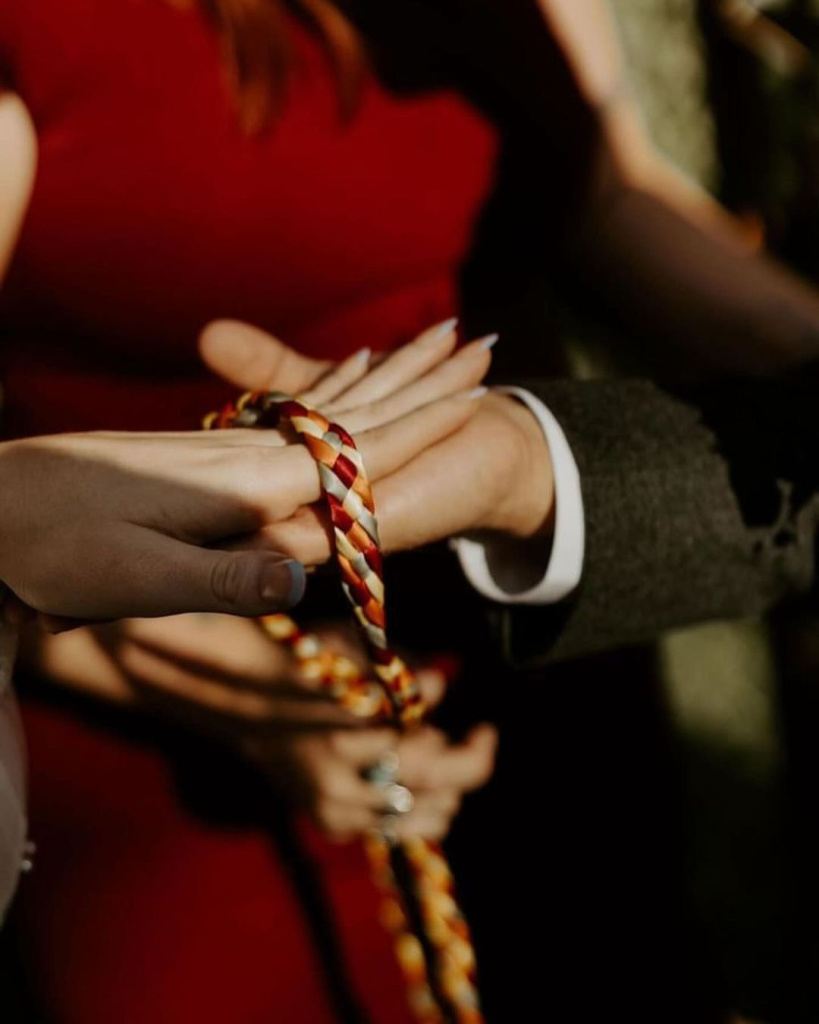
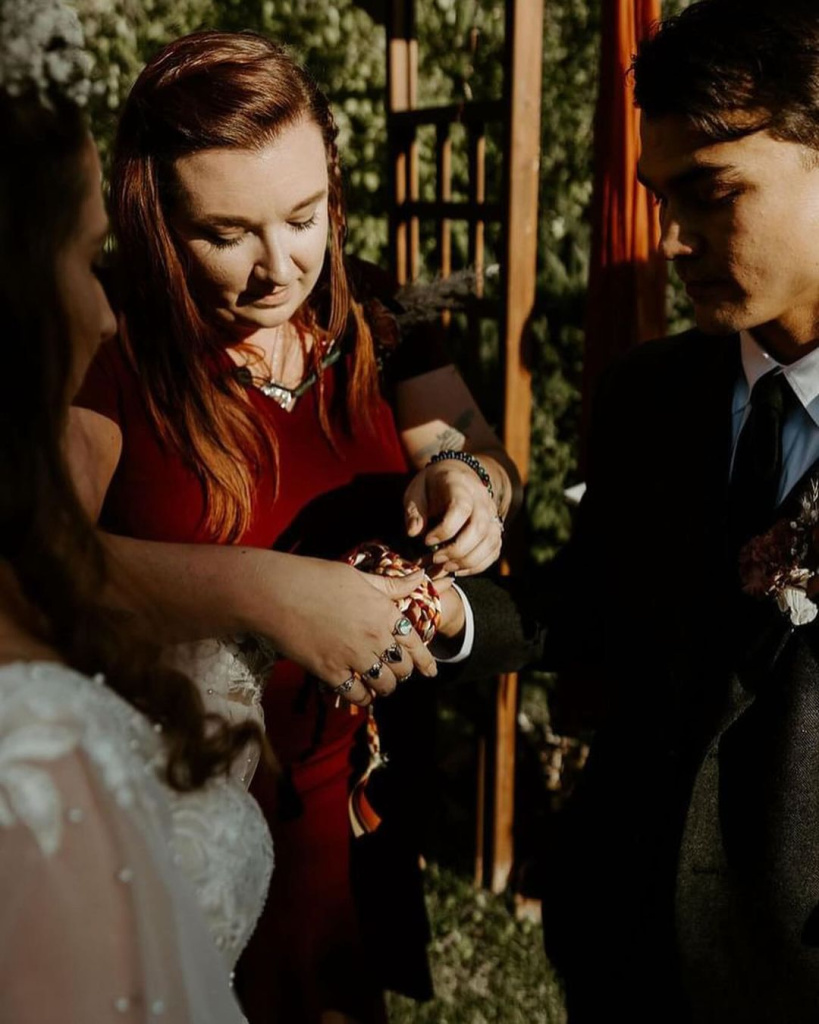
A handfasting ceremony is imbued with a variety of traditional elements that reflect its ancient origins and deep symbolism. These elements are not only ceremonial but also serve to create a meaningful and personalized experience for the couple and their guests.
The Handfasting Cord
The central element of any handfasting ceremony is the cord used to bind the couple's hands. This can be a single strand or a braided piece combining several colors, each reflecting different meanings and intentions for the marriage. Traditionally, materials like silk, satin, or a piece of family tartan are used, adding personal significance and heritage to the ceremony.
The Binding Process
The process of binding the hands can vary, but traditionally, the couple's hands are bound together in a figure-eight symbol, signifying infinity, to represent a lasting union. The celebrant or officiant usually performs the binding while reciting the couple’s vows or blessings. The hands are typically bound three times, symbolizing the couple's past, present, and future.
Ceremonial Circle
Often, the ceremony takes place within a circle, which may be formed by guests or marked out on the ground with natural elements like stones or flowers. The circle represents protection, eternity, and the sacred space within which the couple makes their vows.
Elements of Nature
Incorporating natural elements is a key aspect of traditional handfasting ceremonies. Elements like earth, air, fire, and water may be included to symbolize the balance of nature and the inclusion of various aspects of life. For instance, a bowl of water might be used for purification, candles might be lit to symbolize the fire of love, or stones might be arranged to signify the strength and stability of the earth.
Exchange of Vows and Rings
While the handfasting cord is the unique element of this ceremony, the exchange of vows and rings is also commonly incorporated, blending traditional wedding elements with this distinct ritual. The vows during a handfasting are often personalized and may include traditional Celtic blessings or promises that are specific to the couple's relationship.
Jumping the Broom
In some handfasting ceremonies, particularly those that draw on broader cultural traditions, the couple may choose to "jump the broom." This act symbolizes the sweeping away of the old life and the welcoming of the new, and it is a common element in both pagan and some African American cultural wedding traditions.
Concluding Blessings
The ceremony typically concludes with a blessing or proclamation by the officiant, acknowledging the couple’s newly bound status. This is often followed by the removal of the cords while the hands are still loosely bound, symbolizing that the couple remains united by their vows even after the cords are removed.
Choosing the Right Handfasting Cord Colors
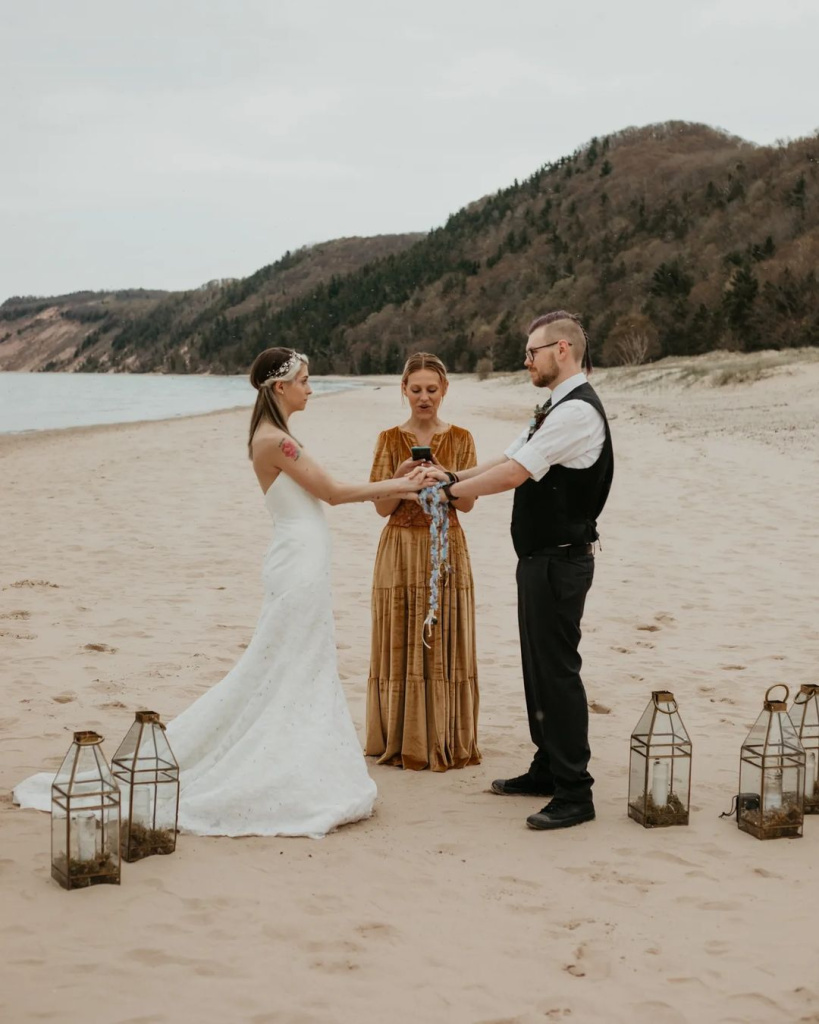
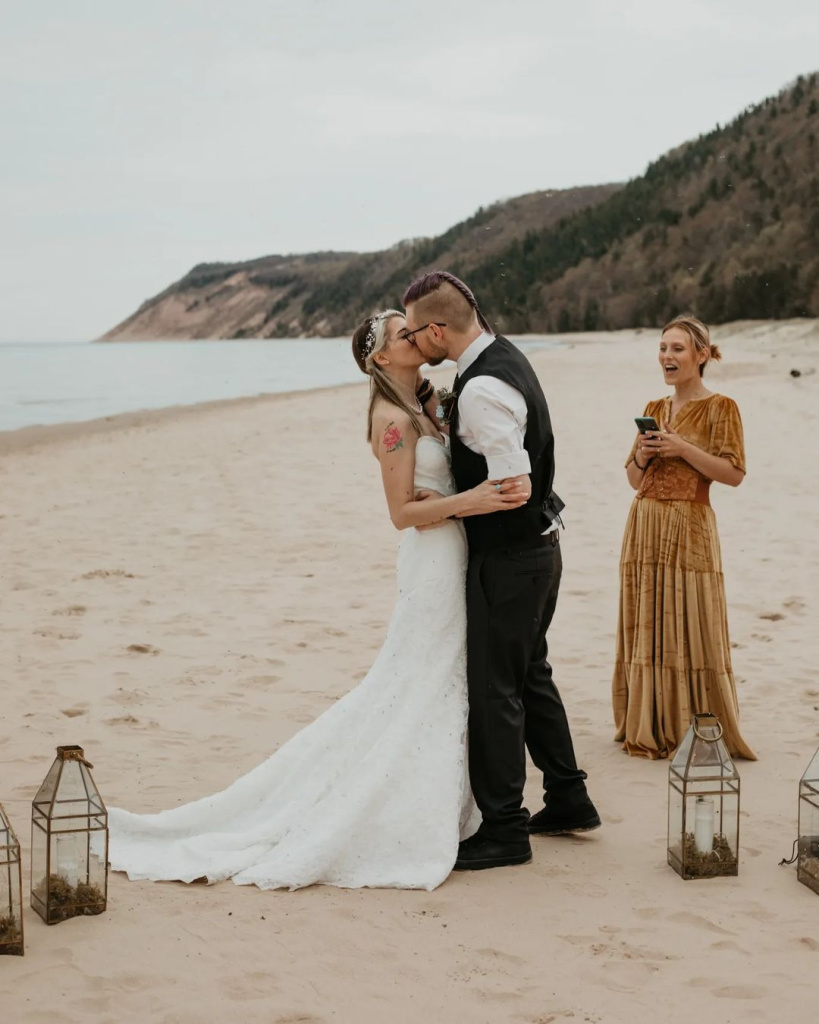
The colors chosen for the handfasting cords carry rich symbolic meanings, with each color bringing its own specific energy and intention to the ceremony. Here’s a detailed look at what each handfasting color traditionally represents:
- Red is perhaps the most vibrant choice for a handfasting cord, symbolizing passion, strength, and deep love. It is also associated with fertility and vitality, making it a popular choice for couples who are celebrating not only their union but also their hopes for a dynamic and loving future together.
- Blue cords are chosen for their calming and healing qualities. This color represents tranquility, understanding, patience, and health. It's an excellent choice for couples who value communication and serenity in their relationship.
- Green is the color of growth, fertility, and financial stability. It is often selected by couples who place a high emphasis on harmony with nature and each other, and those who hope to build a prosperous life together.
- Yellow signifies joy, wisdom, and harmony. It is a bright, cheerful color that can bring an energy of light and happiness to the ceremony. It's also associated with balance and new beginnings.
- Purple stands for power, spirituality, and wisdom. It is often associated with royalty and luxury, making it a choice for those who wish to emphasize the dignity and sacredness of their commitment.
- Black may seem like an unconventional choice, but it is rich with significance. It symbolizes strength, wisdom, and success. It can also represent a binding or protection of the couple’s union, warding off negativity.
- White is traditionally associated with purity, new beginnings, and peace. It is a common choice for couples who want their relationship to be marked by sincerity, truth, and an unblemished start.
- Orange combines the energy of red and the happiness of yellow. It symbolizes attraction, enthusiasm, and success. Choosing an orange cord can reflect a relationship filled with creativity and adventure.
- Pink represents unconditional love, nurturing, and affection. It is often chosen to emphasize a caring and romantic aspect of the relationship, highlighting the sweetness and tenderness between partners.
- Gold is associated with wisdom, wealth, and clarity. It is a symbol of prosperity and is often chosen by couples who view their union as a rich journey of growth and understanding.
- Silver symbolizes clarity, inspiration, and reflection. Like the moon's reflective nature, silver can represent a relationship that is introspective and mindful.
Choosing the color of a handfasting cord is a personal decision that can reflect the couple’s individual values, beliefs, and hopes for their relationship. Each color adds a unique layer of meaning to the ceremony, making it a beautifully customized part of the wedding.
Personalizing Your Handfasting Vows and Rituals
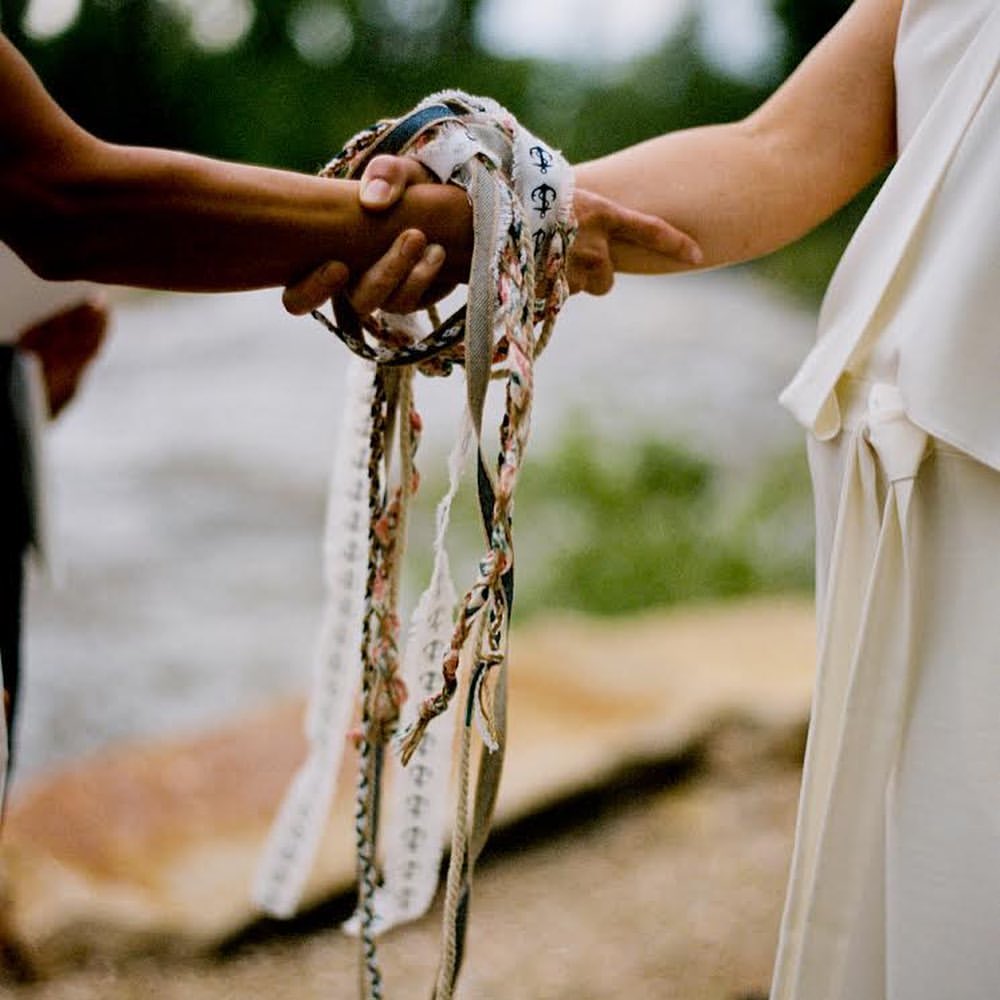
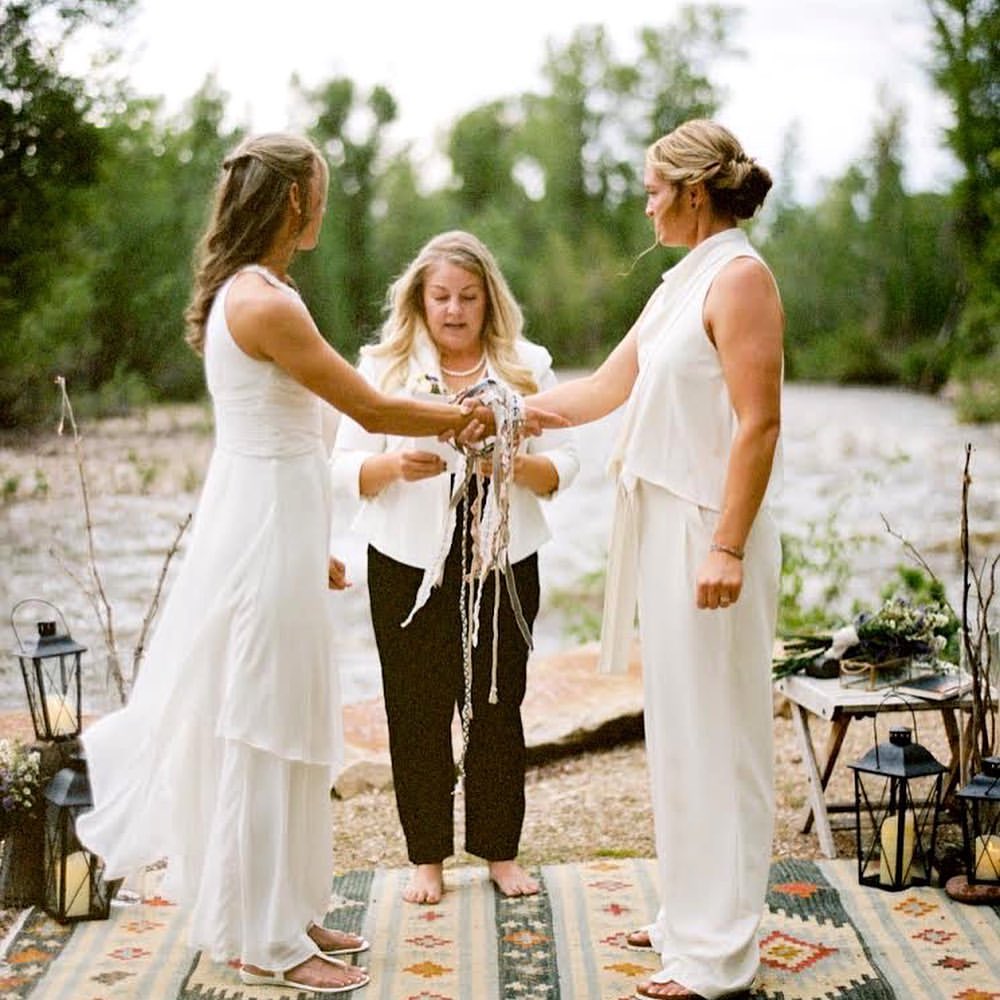
Personalizing your handfasting vows and rituals is a profound way to reflect your unique relationship and intentions for your future together. This customization makes the ceremony not just a formal event but a deeply intimate expression of your bond.
Writing Personal Vows
Crafting your own vows is perhaps the most significant way to personalize your ceremony. These vows can go beyond traditional promises to include anecdotes from your relationship, hopes for your future, and commitments you wish to make in front of your loved ones. Personal vows can resonate more deeply with the couple and the guests, creating an emotionally charged moment.
Choosing Symbols and Tokens
Incorporating personal symbols or tokens into the ceremony can add layers of meaning. For example, you might include family heirlooms, personal artifacts, or new items that signify your journey. Placing these items on the altar or incorporating them into the cord itself can symbolize the bringing together of past influences and future aspirations.
Customizing the Ritual
Beyond the binding of hands, you can introduce other rituals that hold special meaning for you and your partner. Some couples choose to include rituals like planting a tree, lighting a unity candle, or pouring sand. These acts can symbolize various aspects of union, such as the merging of lives, the light of love, or the foundation of a new family.
Involving Friends and Family
Handfasting can become even more personal and inclusive by involving close friends and family in the ceremony. Loved ones can participate by reading passages, bestowing blessings, or being the ones to drape the cord over the couple’s hands. Each participant can bring a cord segment to the ceremony, which can be braided together as part of the ritual, symbolizing the support network surrounding the couple.
Musical Elements
Music plays a powerful role in setting the tone of any ceremony. Selecting music that is significant to your relationship or choosing a friend or family member to perform a song can make the moment even more personal and memorable.
Seasonal and Locational Influences
Consider the time of year and the location of your wedding when planning your ceremony. You can incorporate seasonal flowers, local customs, or elements that reflect the setting, such as seashells for a beach wedding or leaves and acorns for a forest setting. This not only personalizes your ceremony but also connects it to the natural world.
Reflecting Cultural Heritage
For many, honoring cultural heritage is essential. You can integrate aspects of your or your partner’s cultural traditions in your handfasting ceremony. This might involve specific prayers, blessings, attire, or even language. Such elements celebrate the diversity and richness of your backgrounds.







